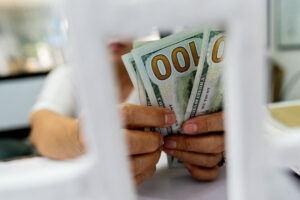External debt service burden surges to $10.8 billion as of end-September
THE PHILIPPINES’ external debt service burden more than doubled in the January-to-September period, according to preliminary data from the Bangko Sentral ng Pilipinas (BSP).

By Keisha B. Ta-asan, Reporter
THE PHILIPPINES’ external debt service burden more than doubled in the January-to-September period, according to preliminary data from the Bangko Sentral ng Pilipinas (BSP).
Based on data posted on the BSP’s website, the country’s debt service burden on its external borrowings skyrocketed by 130.7% to $10.846 billion from $4.702 billion in the same period in 2022.
Month on month, it rose by 22% from $8.89 billion recorded as of end-August.
As of end-September, the debt service burden is equivalent to 3.5% of gross domestic product (GDP), higher than 1.6% recorded in the comparable year-ago period.
The debt service burden refers to the amount of money a country needs to pay back its foreign creditors. It includes both the principal and interest payments on its external debt.
BSP data showed principal payments jumped by 110.6% to $5.861 billion in the January-to-September period from $2.78 billion during the same period in 2022.
Interest payments surged by 159.7% to $4.985 billion in the first nine months of the year from $1.919 billion a year ago.
Principal external debt service is mostly fixed medium- to long-term credit, while interest payments are on fixed and revolving short-term credit from banks and nonbanks.
“The sharp increase in foreign debt payments may have to do with increased foreign borrowings by the government since last year amid the need to hedge against rising interest rates as well as to diversify its sources of borrowings/funding in the global markets, both from commercial and multilateral sources,” Rizal Commercial Banking Corp. Chief Economist Michael L. Ricafort said in a Viber message.
Central banks across the world have tightened monetary policy to tame inflation. The BSP was regarded as one of the most aggressive central banks in the region after it hiked the key interest rate by 450 basis points (bps) from May 2022 to October 2023.
Meanwhile, separate BSP data showed the country’s outstanding external debt increased by 10.1% to $118.833 billion at end-September from $107.91 billion in the same period a year ago. It also inched up by 0.8% from $117.9 billion as of end-June.
External debt refers to all types of borrowings by Philippine residents from nonresidents, following the residency criterion for international statistics.
The external debt ratio, or the external debt as a percentage of GDP, was equivalent to 28.1% of GDP. This was slightly lower than 28.5% in the previous quarter.
“For the coming months, external debt servicing costs could remain elevated amid increased foreign borrowings in recent months amid the further diversification of the government’s funding sources in global markets as well as to provide continued supply/liquidity of Philippine sovereign bonds in the world market as part of capital market development,” Mr. Ricafort said.
However, possible rate cuts from both the US Federal Reserve and the Monetary Board due to easing inflation may help mitigate external debt servicing costs, he added.
BSP Governor Eli M. Remolona, Jr. earlier said the BSP is unlikely to cut interest rates in the coming months, as monetary policy in the Philippines is in a “higher for longer” scenario.
The Monetary Board kept its benchmark rate at a 16-year high of 6.5% for a second straight meeting during its December meeting. Interest rates on the overnight deposit and lending facilities were also left unchanged at 6% and 7%, respectively.
Policy easing will only be considered if inflation and inflation expectations are within a “comfortable” range, Mr. Remolona added.
Headline inflation eased to 4.1% in November and brought the 11-month inflation average to 6.2%. November marked the 20th straight month that inflation breached the BSP’s 2-4% target band for this year.
The central bank expects inflation to average 6% this year.














